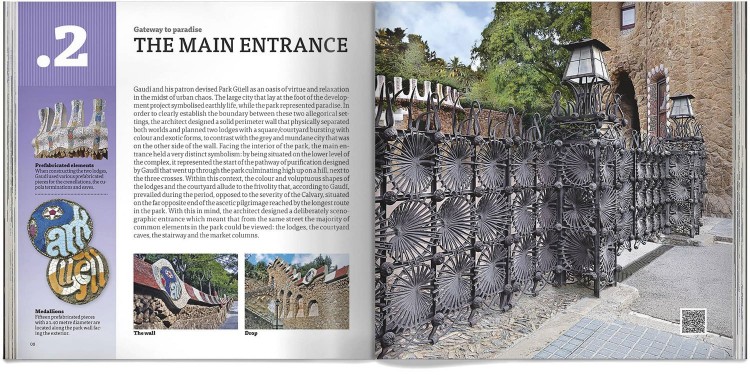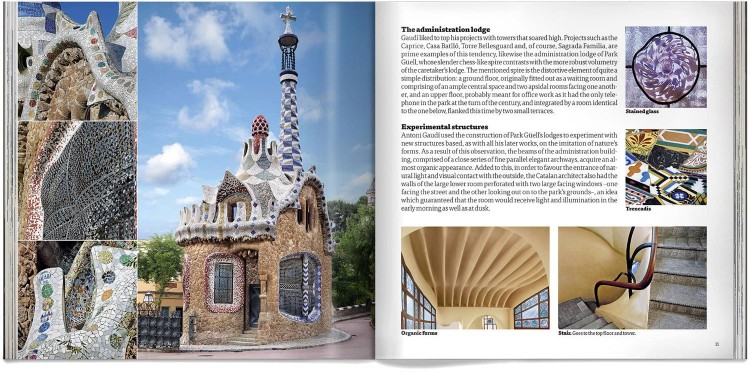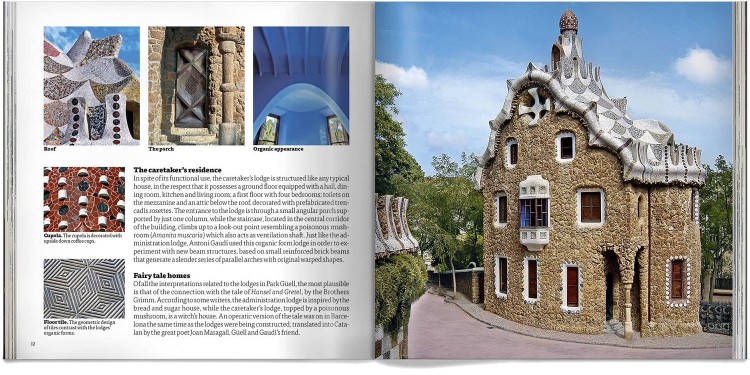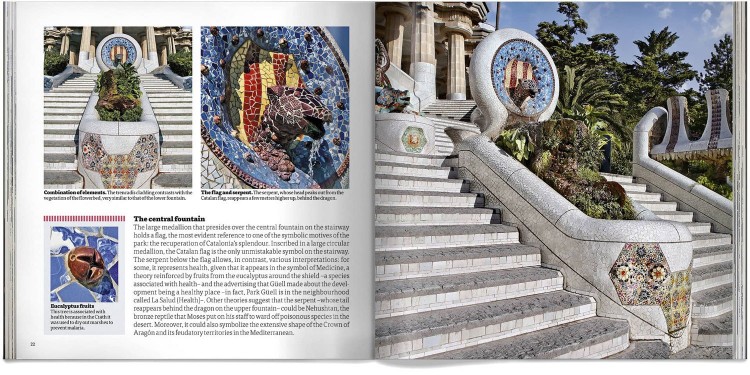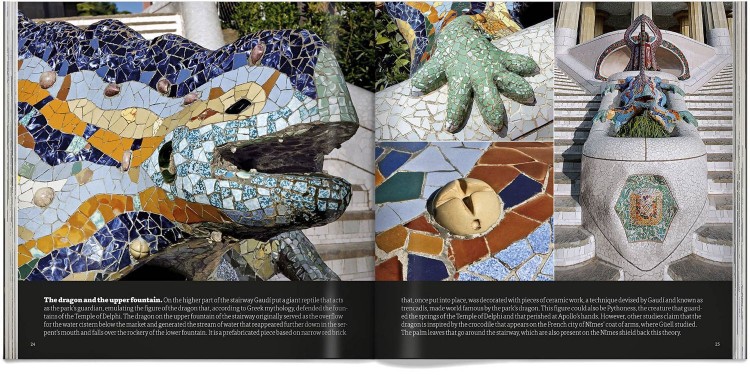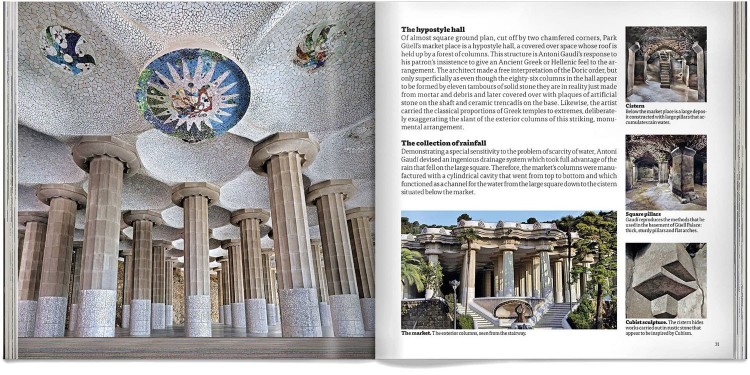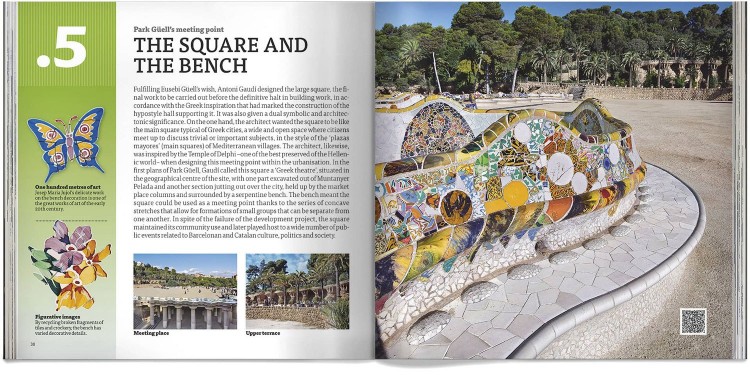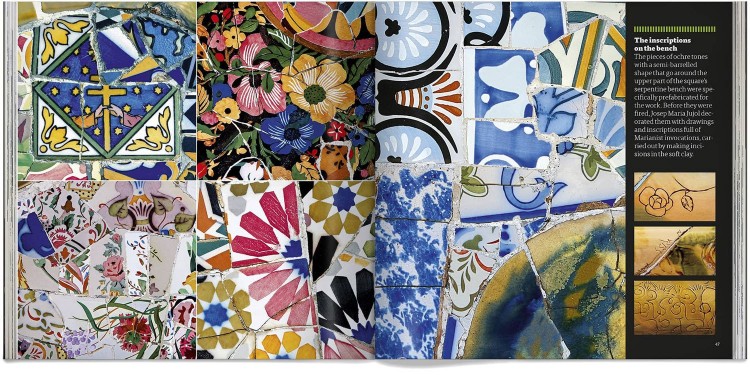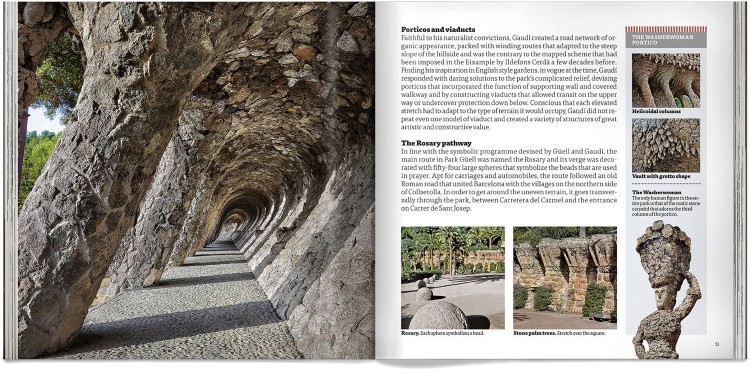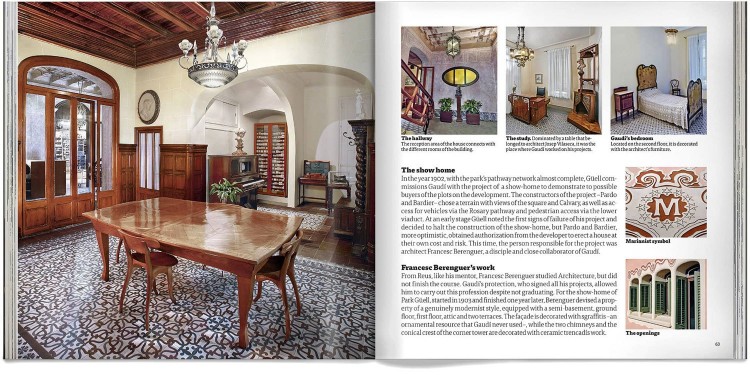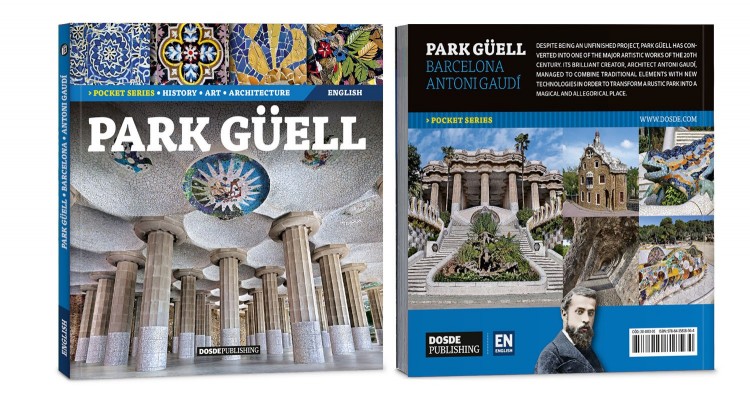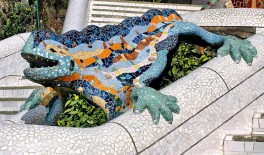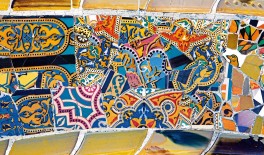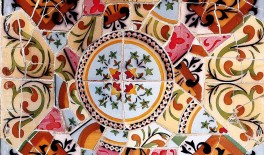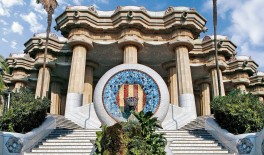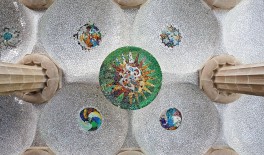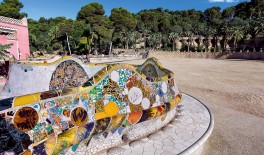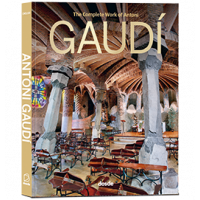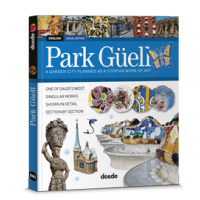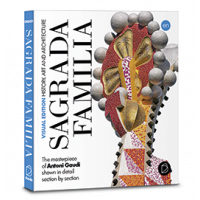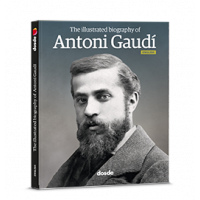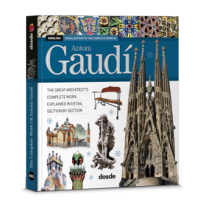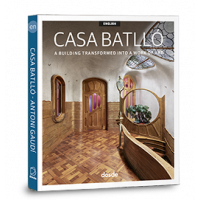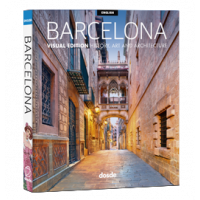Park Güell
History, art, architecture
RETURN
About the book Park Güell
Located on a hillside in the north part of Barcelona, Park Güell is one of the most admired works of architect Antoni Gaudí, who demonstrated his artistic and boundless imagination creating a magical space packed with allegorical elements that have been interpreted in many different ways.
Promoted by the influential Barcelonan businessman Eusebi Güell, the park was originally devised as an exclusive garden city aimed at well-to-do high society families who wanted to get away from the busy city life and be closer to nature. Güell gave Gaudí free rein to design the site, in such a way that the architect was able to experiment with new construction techniques and incorporate references to Classical mythology, the history of Catalonia and the Christian religion.
This handy-sized book covers the essential aspects of Park Güell, from the origins of the project to Gaudí's main sources of inspiration. By means of its pages, the reader can go around the different parts of this unique work, declared a World Heritage Site by Unesco in 1984.
Promoted by the influential Barcelonan businessman Eusebi Güell, the park was originally devised as an exclusive garden city aimed at well-to-do high society families who wanted to get away from the busy city life and be closer to nature. Güell gave Gaudí free rein to design the site, in such a way that the architect was able to experiment with new construction techniques and incorporate references to Classical mythology, the history of Catalonia and the Christian religion.
This handy-sized book covers the essential aspects of Park Güell, from the origins of the project to Gaudí's main sources of inspiration. By means of its pages, the reader can go around the different parts of this unique work, declared a World Heritage Site by Unesco in 1984.
Pocket Edition
Park Güell
It includes exclusive digital content
Made with environmentally friendly paper
Multilanguage: Available in 8 languages
More than 160 pictures and detailed info
About the book Park Güell
Located on a hillside in the north part of Barcelona, Park Güell is one of the most admired works of architect Antoni Gaudí, who demonstrated his artistic and boundless imagination creating a magical space packed with allegorical elements that have been interpreted in many different ways.
Promoted by the influential Barcelonan businessman Eusebi Güell, the park was originally devised as an exclusive garden city aimed at well-to-do high society families who wanted to get away from the busy city life and be closer to nature. Güell gave Gaudí free rein to design the site, in such a way that the architect was able to experiment with new construction techniques and incorporate references to Classical mythology, the history of Catalonia and the Christian religion.
This handy-sized book covers the essential aspects of Park Güell, from the origins of the project to Gaudí's main sources of inspiration. By means of its pages, the reader can go around the different parts of this unique work, declared a World Heritage Site by Unesco in 1984.
Promoted by the influential Barcelonan businessman Eusebi Güell, the park was originally devised as an exclusive garden city aimed at well-to-do high society families who wanted to get away from the busy city life and be closer to nature. Güell gave Gaudí free rein to design the site, in such a way that the architect was able to experiment with new construction techniques and incorporate references to Classical mythology, the history of Catalonia and the Christian religion.
This handy-sized book covers the essential aspects of Park Güell, from the origins of the project to Gaudí's main sources of inspiration. By means of its pages, the reader can go around the different parts of this unique work, declared a World Heritage Site by Unesco in 1984.
Readers opinions
(3)
RETURN
Reviews
(3)
The front cover caught my attention and when I opened it I liked the content
A good buy
I liked it a lot, it was what I wanted and was looking for.
Readers opinions
(3)
The front cover caught my attention and when I opened it I liked the content
A good buy
Additional Information
- Additional Information
- Subtitle: History, art, architecture
- Weight (g): 185
- Binding: Paperback with flaps
- Size (cm): 17,5 x 19,5
- Author: Dosde
- Pages: 0
- Edition: Pocket Edition
Gaudí's Park Güell and Barcelona
In 1899, the Catalan industrialist Eusebi Güell acquired various plots of land on the outskirts of Barcelona belonging to an old farmhouse, in order to construct a housing development of detached properties on it for wealthy families. Barcelona was undergoing a demographic explosion due to decades of intense industrialisation that had attracted swarms of labourers from the countryside to the metropolis.
His trusted architect, Antoni Gaudí, was the one chosen to design this residential complex, which was planned to have common areas, squares and lodges for offices and the park's administration. However, the economic circumstances and the idealism of Gaudí and Güell led to the failure of the urban development and led to its transformation into a municipal public park in the year 1922, which it continues to be today.
Gaudí's Park Güell is considered as one of the most important works of the Modernist architect.
Gaudí, always keen on combining architecture and nature, introduced numerous elements and sculptures from the animal and plant world, including a giant reptile that acts as the park's guardian and which is found at the top of the entrance staircase.
These references to nature are found throughout the park, often depicted on many occasions on the trencadís cladding, a type of mosaic application based on ceramic fragments and other materials, found on the benches of the park's large central square.
At present Gaudí's Park Güell is a symbol of Barcelona and has converted into one of the most visited places in the city.
His trusted architect, Antoni Gaudí, was the one chosen to design this residential complex, which was planned to have common areas, squares and lodges for offices and the park's administration. However, the economic circumstances and the idealism of Gaudí and Güell led to the failure of the urban development and led to its transformation into a municipal public park in the year 1922, which it continues to be today.
Gaudí's Park Güell is considered as one of the most important works of the Modernist architect.
Visit Gaudí's Park Güell
Gaudí and his patron devised Park Güell as an oasis of virtue and relaxation in the midst of urban chaos. The large city that lay at the foot of the development project symbolised earthly life, while the park represented paradise. The architect designed a deliberately scenographic entrance which meant that from the same street the majority of common elements in the park could be viewed: the lodges, the courtyard caves, the stairway and the market columns.Gaudí, always keen on combining architecture and nature, introduced numerous elements and sculptures from the animal and plant world, including a giant reptile that acts as the park's guardian and which is found at the top of the entrance staircase.
These references to nature are found throughout the park, often depicted on many occasions on the trencadís cladding, a type of mosaic application based on ceramic fragments and other materials, found on the benches of the park's large central square.
At present Gaudí's Park Güell is a symbol of Barcelona and has converted into one of the most visited places in the city.

